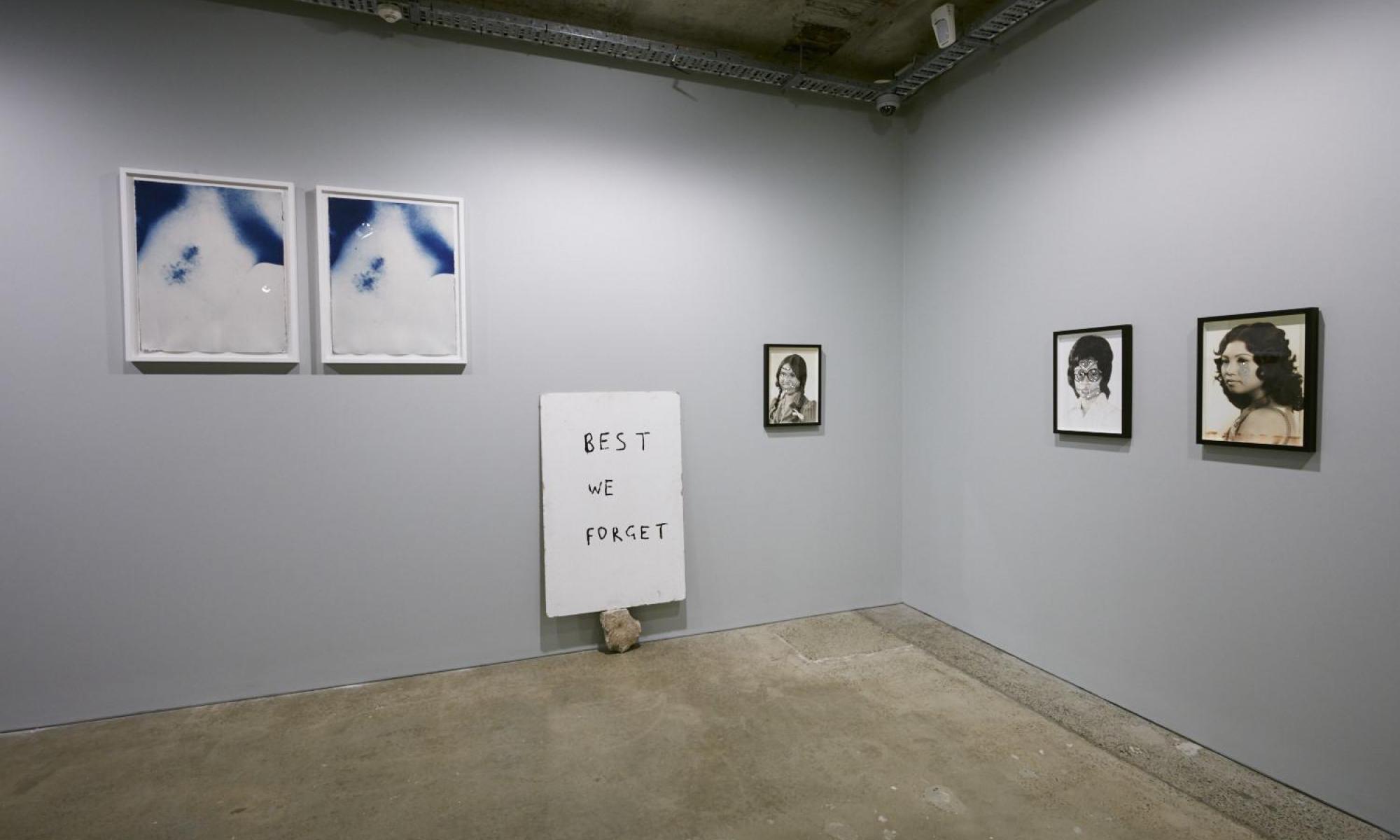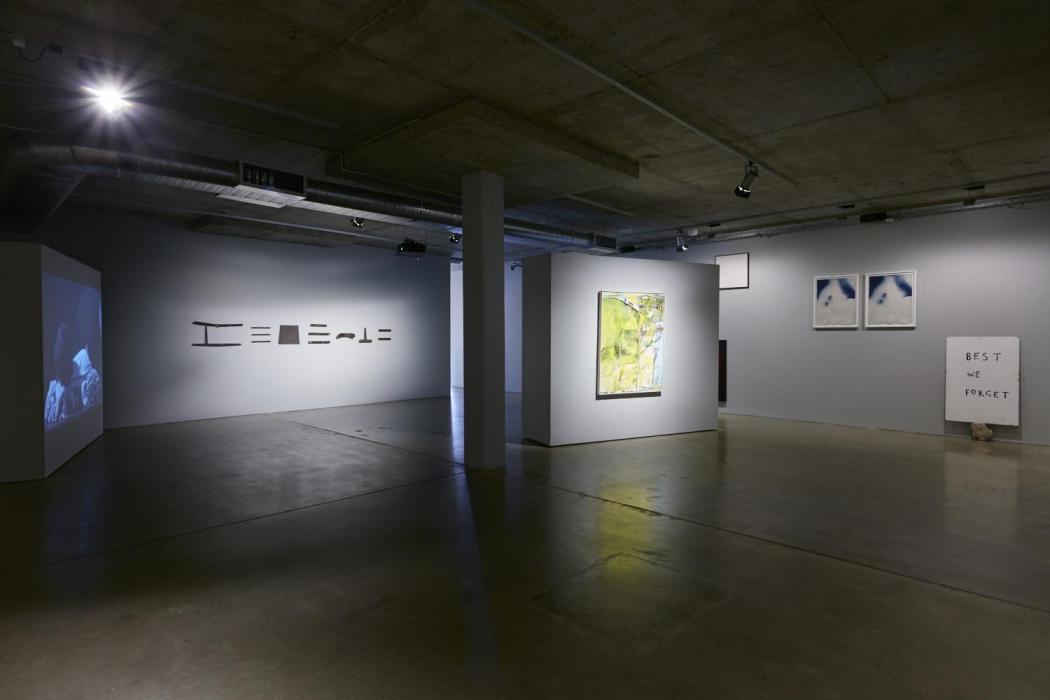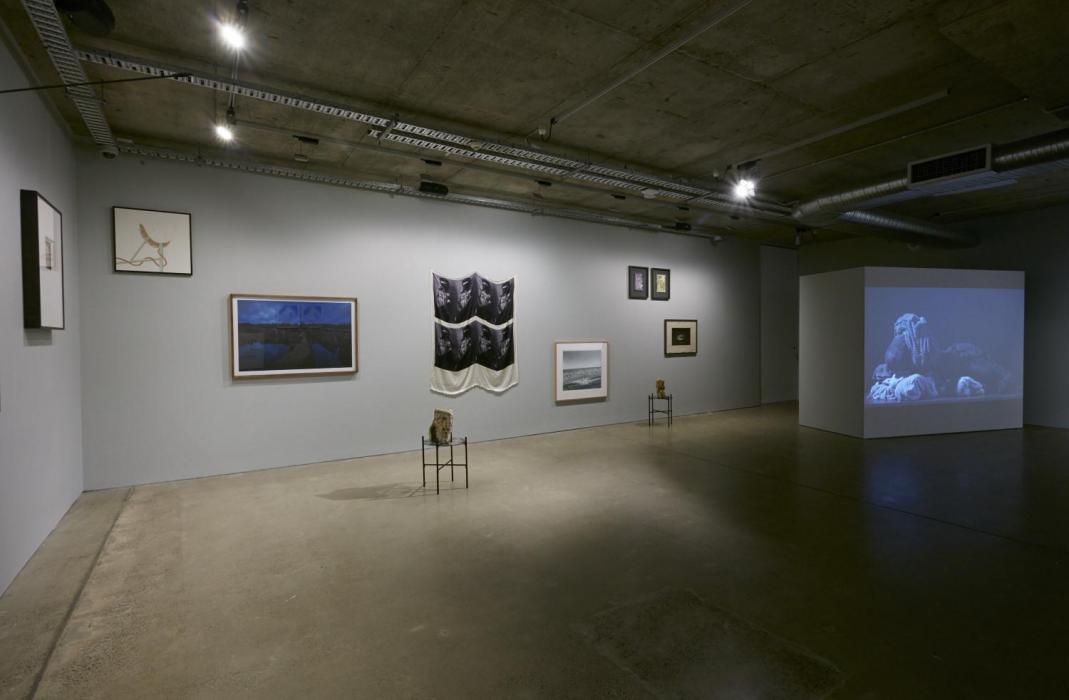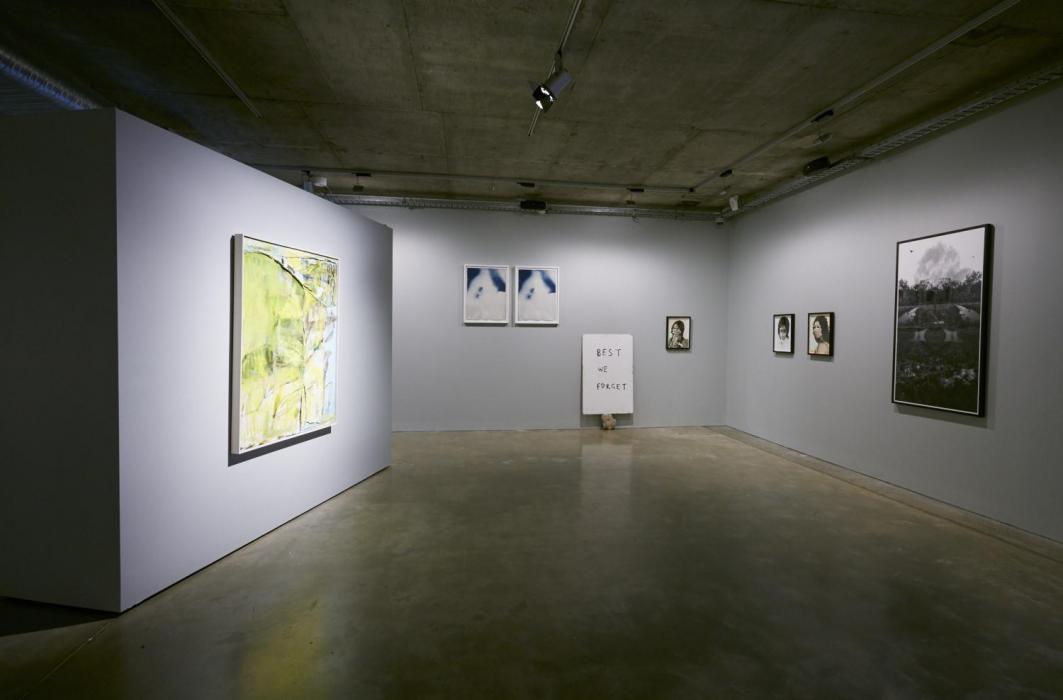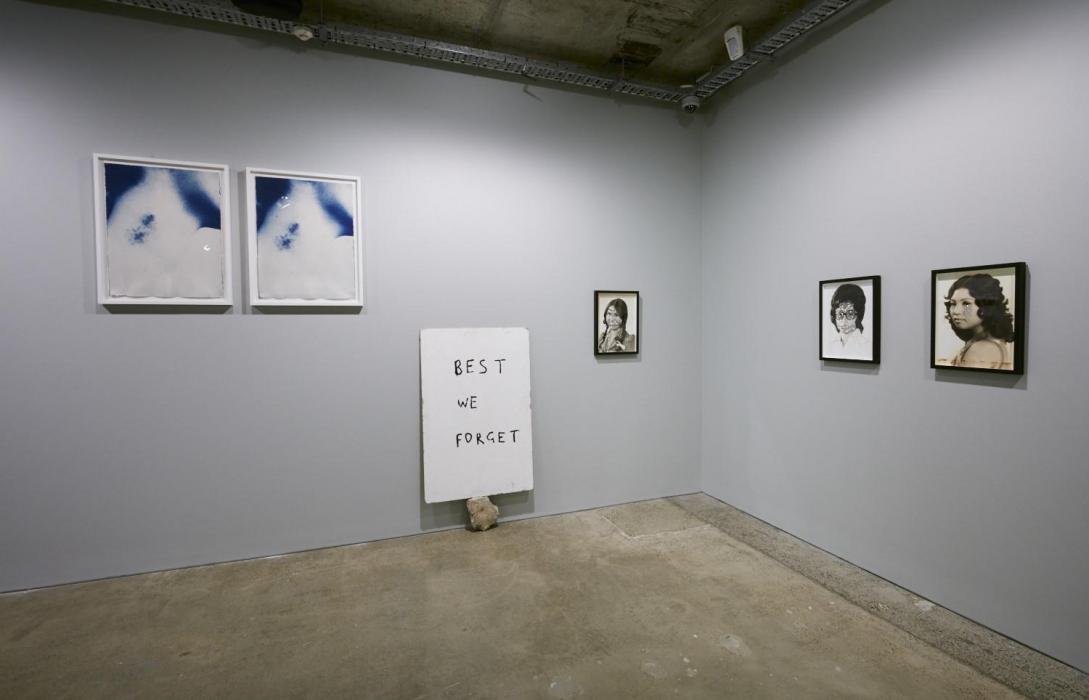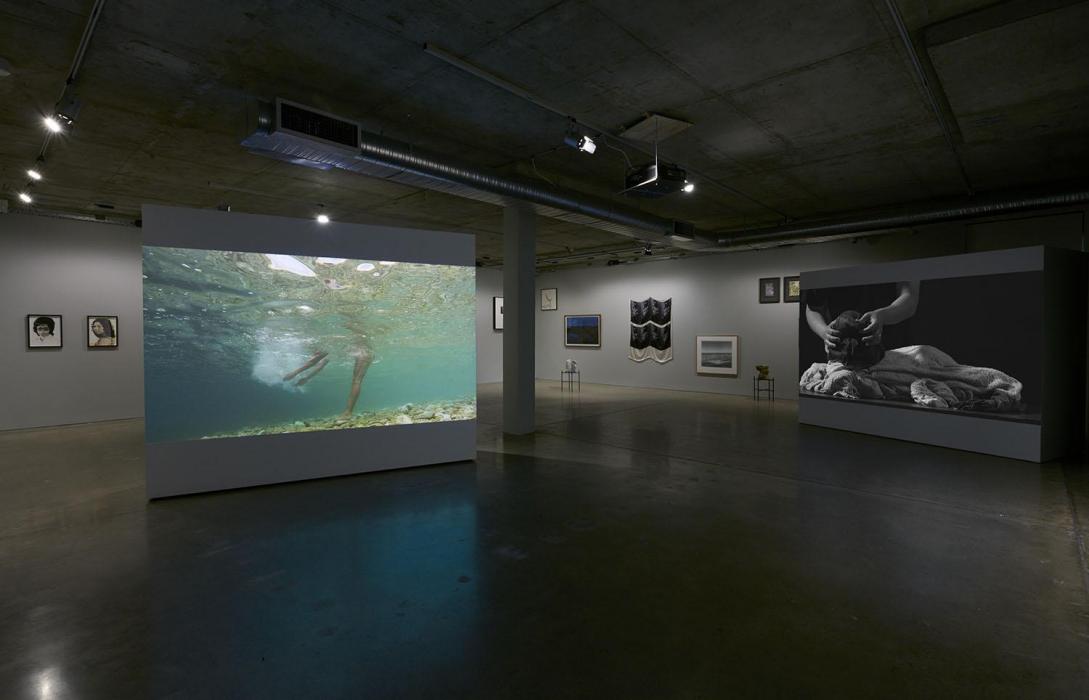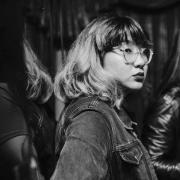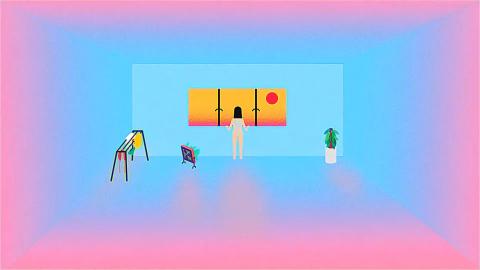In A World of Wounds, Curated by Talia Smith
The Anthropocene has become a buzzword in the curatorium and academe since its popularisation by Nobel Laureate Paul Crutzen in 2000. A neologism from anthropo, for ‘man’ and cene, for ‘new’, the Anthropocene refers to the current geological epoch where environmental disasters, such as climate change and species extinction, are leaving irrevocable traces on the planet.[1]
However, when discussing art and the Anthropocene, three issues often arise for me: the first being that Anthropocenic discourse remains largely academic and elitist. Secondly, curators, theorists, and scientists alike do not widely acknowledge that the Anthropocene is an intersectional political issue tied to capitalist, hegemonic practices and colonial discourse. Finally, it has become too easy to lose a sense of the individual in these global concerns. Indeed, the Anthropocene has largely been discussed through a Western Eurocentric teleological lens: looking forward, without considering the past or the present.[2]
Talia Smith must be applauded for tackling these issues in her curation of In A World of Wounds at Artbank. Bringing together twenty artists from Australia and Aotearoa, Smith explores the ongoing impact of human activity on the planet, revealing the complex histories of power and violence behind the concept of the Anthropocene.
This is immediately established with the first work of the exhibition, Angela Tiatia’s video Lick (2015) in which Tiatia rightfully observes the intersection between environmental destruction, globalisation, neo-colonialism and cultural displacement. In Lick, Tiatia faces the waves as the high tide comes in and eventually the waves engulf her and she drifts away. Filmed in Tuvalu, in the South Pacific, the video is a poignant reflection of the fate of many communities in the Pacific that are endangered by climate change. Similarly, Sam Doctor’s haunting photograph of Hang Dong Quarry near Chiang Mai, And then there was nothing (2015) portrays the abandoned mine as a site of lasting trauma for local Thai residents.
Hayley Millar-Baker’s photographic series Even if the race is fated to disappear (2017) also challenges the Universalist attitude prevalent in Anthropocenic theory, which, erroneously assumes a generalised anthropos, where all humans are equally affected and implicated. Millar-Baker depicts the changing landscapes for Indigenous communities from ‘resettlement’ into missions to contemporary displacement due to settler-colonial capitalist structures that occupy unceded land for economic gain, resulting in environmental desolation. These portrayals of colonial architecture contrast with Indigenous understandings of deep time and the history of the land. In her excavation of history, Millar-Baker’s series provokes larger questions about temporality and the Anthropocene. The issue of ecological decay expands beyond that of a single generation or a lifetime but implicates the stretches of time both behind and ahead of us. This sentiment is also continued in Dean Cross, Gilgi Edwards and Sarah Mosca’s works. Cross’ Untitled Slogan Painting (2017), which reads, ‘Best We Forget’, references the collective amnesia surrounding Indigenous disenfranchisement and calls for a prioritisation of Indigenous understandings of history and the environment.
These issues around temporality are further exemplified by Maria Kontis’ drawing The Warning I (2004) which portrays an analogue clock lying face down. In the context of this exhibition, Kontis perhaps suggests that we have forgotten the deep past in our myopic progress towards the future. Or perhaps Kontis implies that our refusal to respond to the urgency of environmental catastrophe derives from the misconception that we have sufficient time to find solutions. Or, in the despondent image of a fallen clock, she comments that what we hold now in the present may disappear in the future. Indeed, vestiges of the ghostly linger in this exhibition, hinting not only at the extinction that we humans have engendered but also, more widely, the inevitability of disappearance and loss that occurs with time. Nabilah Nordin’s cement sculptures Small Monument to Ergonomics (2017) and Tarik Yasin Ahlip’s plaster cast Carapace (2018) resemble archaeological debris and paraphernalia, whilst Merryn Lloyd’s and Kevin Lincoln’s painterly gestures on canvas are traces of past human presence. In Christine Cornish’s silver gelatin photograph, Datum #8 (2001), the material object depicted is seemingly dissolved beyond recognition, signifying a sense of dissolution.
This sense of loss is felt more palpably in the personal narratives recounted by Nathan Beard, Julie Gough and Phuong Ngo. Julie Gough’s Sentence (Ancestor) (2007) details the story of her ancestor, Woretemoeteyenner, on parts of a deconstructed wooden chair. Phuong Ngo’s video My Dad the People Smuggler (2013) recounts his father’s story as a Vietnamese refugee and people smuggler, whilst Nathan Beard commemorates his deceased relatives by altering found photographs of them from his mother’s abandoned home in Nakhon Nayak in Thailand. These works poignantly reveal that multi-generational and inherited traumas inform narratives of the Anthropocene. Our conversations about the environment must be informed by migration, displacement, and lived experiences which are all inextricably linked to identity.
The sense of melancholy is present in Shannon Te Ao’s video A Torch and a Light (Cover) (2015) in which a pair of hands sculpt wet towels on a table to resemble mountainous terrains. These hands knead the towels, suggesting that humans do not have a benign effect on nature, but our actions directly and physically mould the landscapes around us. The male narrator recites the translated words of a precolonial waiata (a Māori song) which describes the night sky as he pines for his spouse whom he has left with the elders of her whanau. The sound of this waiata reverberates through the exhibition, imbuing the space with a sense of longing and mourning.
However, whilst the tone of the exhibition seems to be one of lament, Smith presents a nuanced perspective, best encapsulated by Tracey Moffatt’s photograph, Up in the Sky #25 (1997). Whilst originally included in a series of 25 photographs that examine the subject of violence and race, presented separately, the photograph is devoid of narrative and depicts a single diminished figure in a vast landscape. There is ambivalence in this mise-en-scene: does the figure lie down in respite or defeat? Do they open their arms to the sky in joy or resignation? A similar ambiguity is prevalent in Spence Messih’s cyanotypes River Beneath the River (2017) in which an exposed bruised neck bears the mark of violence yet the delicacy of the medium belies a potential for healing. Tod McMillan’s photograph Flare (2013) is a mesmerising image of a red flare, which is typically a sign of distress but here it may also be read as a hopeful guiding light. Teelah George’s Yellowing Light (2017) may be interpreted as a warm celebration of colour and light, but the yellowing also speaks to inevitable decay over time. Their works are informed by the tension between despair and hope, destruction and delight, just as our perceptions of the future are shrouded by uncertainty.
Acknowledging these nuances, it seems that Smith’s exhibition emphasises what Australian philosopher Glenn Albrecht coined in 2003 as ‘Solastalgia’: a ‘form of psychic or existential distress caused by environmental change.’[3] Solastalgia encapsulates the trauma experienced by individuals as homes are transformed by environmental disaster. Artworks informed by the concept of Anthropocene have oft-been criticised for aestheticising horror, poeticising decay and normalising catastrophe. Yet, if we consider the phenomenon of solastalgia, perhaps there is merit in this beauty and its ability to captivate. Perhaps we need that solace to progress in a world of wounds.
[1] Affrica Taylor and Lesley Instone (2015), ‘Thinking Inheritance Through the Figure of the Anthropocene’, Environmental Humanities, 7(1), 138.
[2] Zoe Todd and Heather Davis (2017), ‘Decolonizing the Anthropocene’, ACME, 16(4), 761-780.
[3] Glenn Albrecht (2005), ‘Solastalgia, a new concept in human health and identity’ Philosophy Activism Nature, 3, 41-44.

